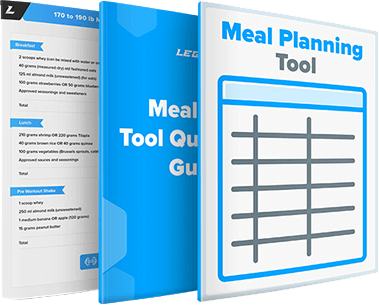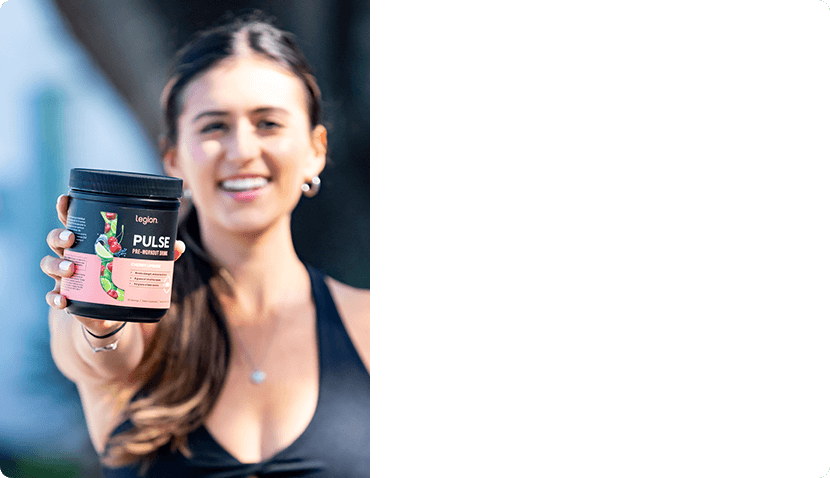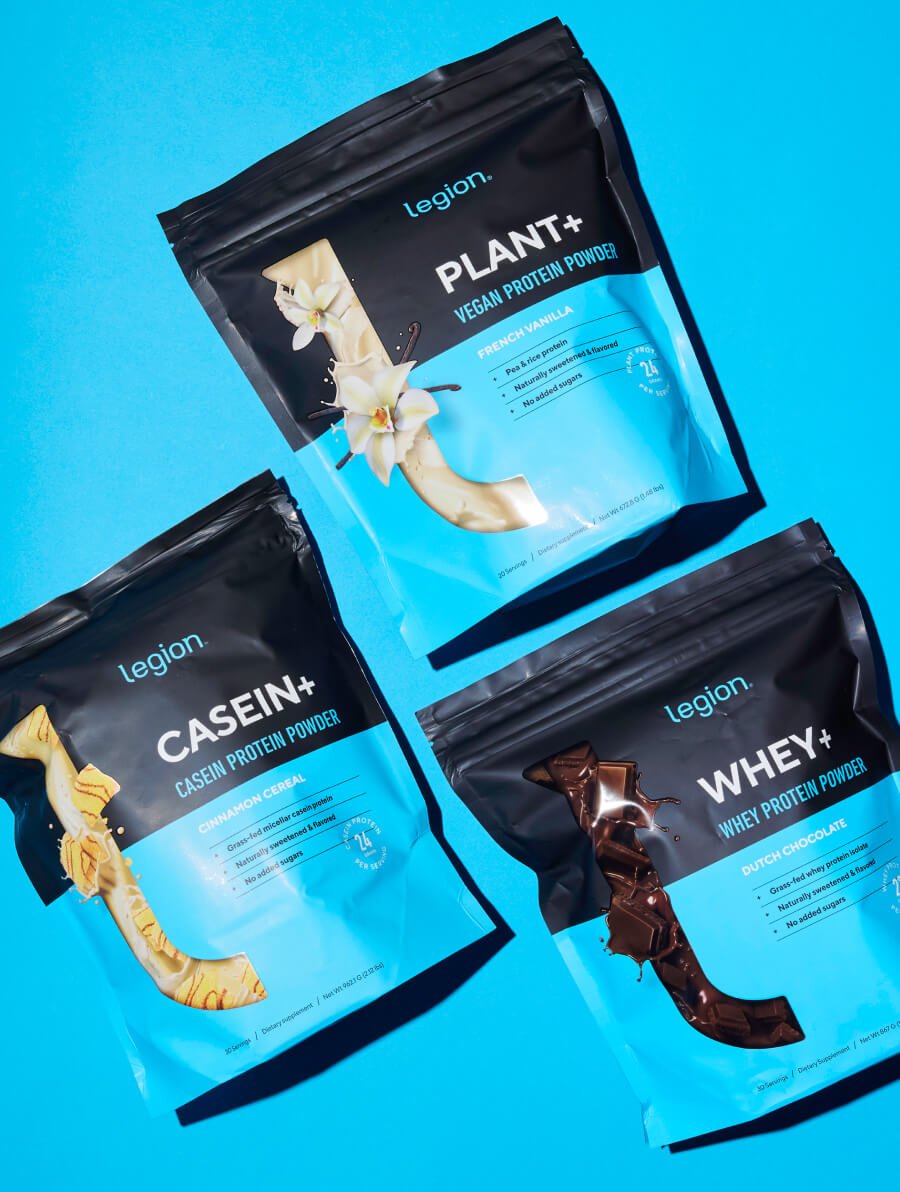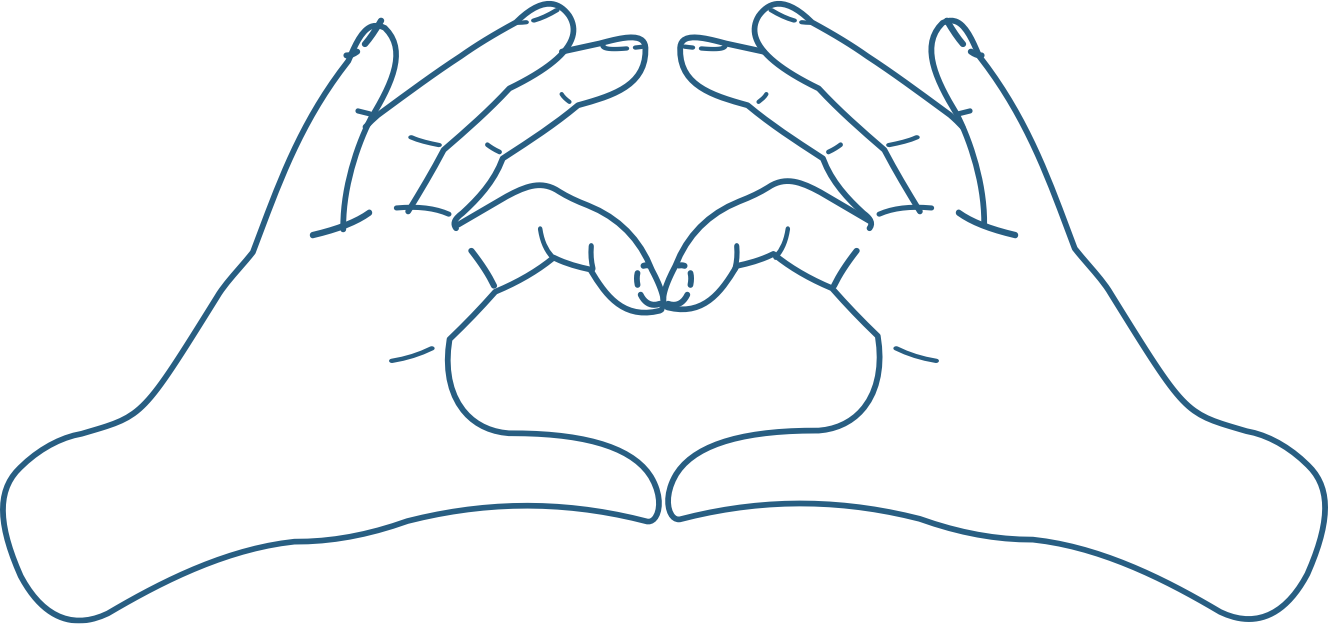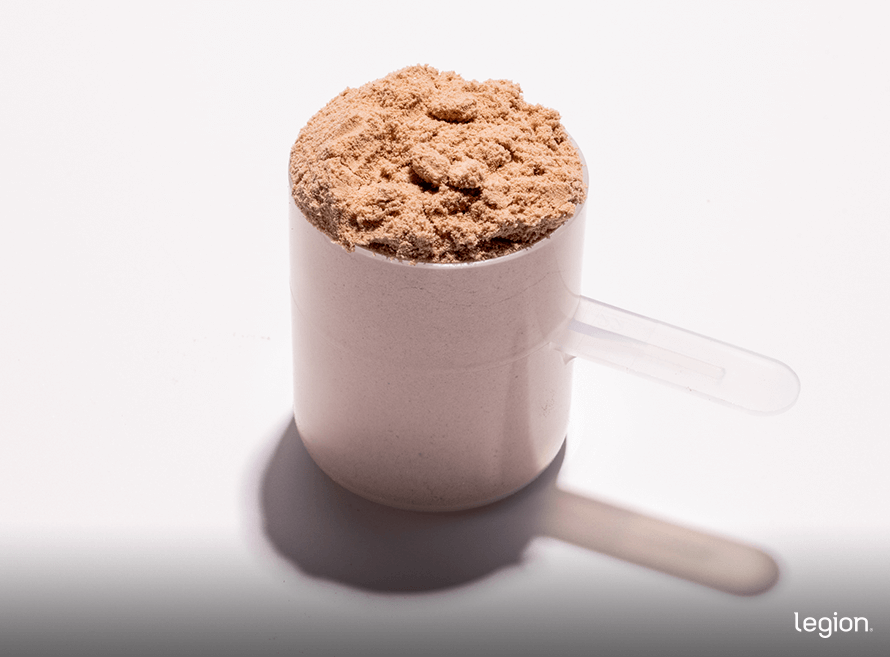
If you can . . .
- Figure out how many calories and how much protein to eat every day
- Consistently eat about that many calories and that much protein every day
. . . you’ll never struggle with your weight ever again. That’s the passport to the promised land.
This is one of the reasons a high-protein diet is increasingly popular, which has led to a dramatic increase in demand for protein powders, as well as “high-protein” foods, beverages, and treats.
There’s a major problem with many of these products, however:
They’re using labeling loopholes to lie about their protein content.
Specifically, these products either contain significantly less protein than they claim or less usable protein that can meaningfully contribute to muscle growth.
Fortunately, there’s an easy way to catch many of the sinners.
It’s called “% Daily Value” (%DV), and in this article, you’ll learn exactly how these labeling loopholes work and how to use %DV to tell the difference between real protein and misleading marketing.
Key Takeaways
- The grams of protein on a food label don’t always reflect how much muscle-building protein you’re actually getting.
- Companies can legally inflate that number by including cheaper, low-quality protein sources and even single amino acids, provided they don’t make a protein claim (e.g., “high-protein”) on the label.
- The “% Daily Value” (%DV) for protein adjusts for protein quality—showing how much usable, complete protein a product really contains.
- A missing %DV isn’t always bad, but when a product mixes high- and low-quality proteins or amino acids, the label might be misleading if %DV is excluded.
- The best protein powders use complete, high-quality sources—like whey, casein, egg, or a rice-and-pea blend—so you can trust the grams on the label, even without a %DV.
Table of Contents
+
What Does “Grams of Protein” on a Label Actually Mean?
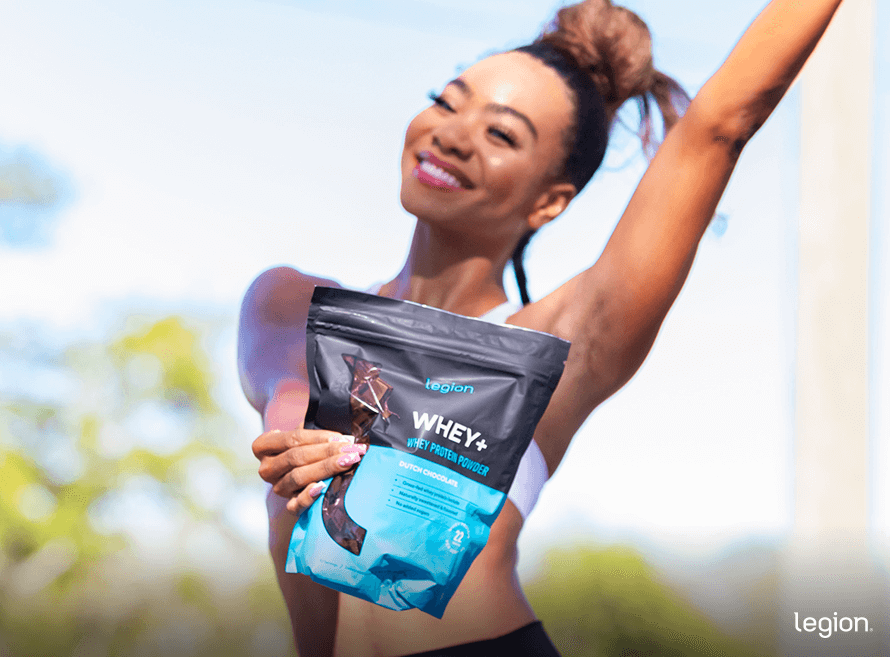
Most people assume that when a supplement’s label says “20 grams of protein,” it means it contains 20 grams of the stuff that builds and repairs muscle.
That’s not how it works, though.
How Protein Is Actually Measured
The “grams of protein” you see on a Nutrition Facts panel aren’t measured by weighing protein itself. They’re estimated using a chemical test that looks for nitrogen.
This works because proteins are made up of amino acids, and amino acids contain nitrogen.
Scientists measure how much nitrogen a food or supplement contains, multiply it by a conversion factor—a number used to estimate how much protein corresponds to a given amount of nitrogen (usually 6.25)—and call that the protein content.
This test—called the Kjeldahl method—is simple and reliable enough for most foods, but it has a major flaw: it can’t tell where the nitrogen came from.
If a company adds anything rich in nitrogen—like free amino acids or low-quality proteins such as collagen—the test still counts it all as “protein.” That means a product can legally claim a high protein number on the label even if much of the protein won’t help you build or repair muscle.
Why “% Daily Value” (%DV) Is More Important Than Total Protein
Since you can’t just go by the total amount of protein on the label, the FDA requires manufacturers to calculate something called the Protein Digestibility Corrected Amino Acid Score, or PDCAAS, for their product.
PDCAAS measures protein quality, not just quantity, by looking at two things:
- Whether a protein provides all nine essential amino acids that we must get from our diet, and whether there’s enough of each to help your body build and repair muscle effectively.
- How easily your body can digest and use the protein.
Proteins that contain all nine essential amino acids in adequate amounts are called “complete” proteins and score high on the PDCAAS scale. Whey, casein, and egg, for example, all fall into this category.
Proteins that are missing one or more essential amino acids are called “incomplete,” and they score lower on the PDCAAS scale. For instance, collagen lacks the amino acid tryptophan and is very low in several others, giving it a score close to zero.
Manufacturers then use that score to determine the % Daily Value (%DV) for protein—the number on the Nutrition Facts panel that shows how much usable, high-quality protein you’re actually getting per serving, relative to the FDA’s reference value for the general population (50 grams per day).
For example, imagine a powder that blends 10 grams of whey with 10 grams of collagen. On the packaging, it can legally list “20 grams of protein,” which you might assume equals 40% of your Daily Value (since 20 is 40% of 50).
Sounds like a lot.
But because only the whey counts as complete protein, you’re only getting 10 grams of usable, high-quality protein, or 20% of the Daily Value.
The Problem with %DV
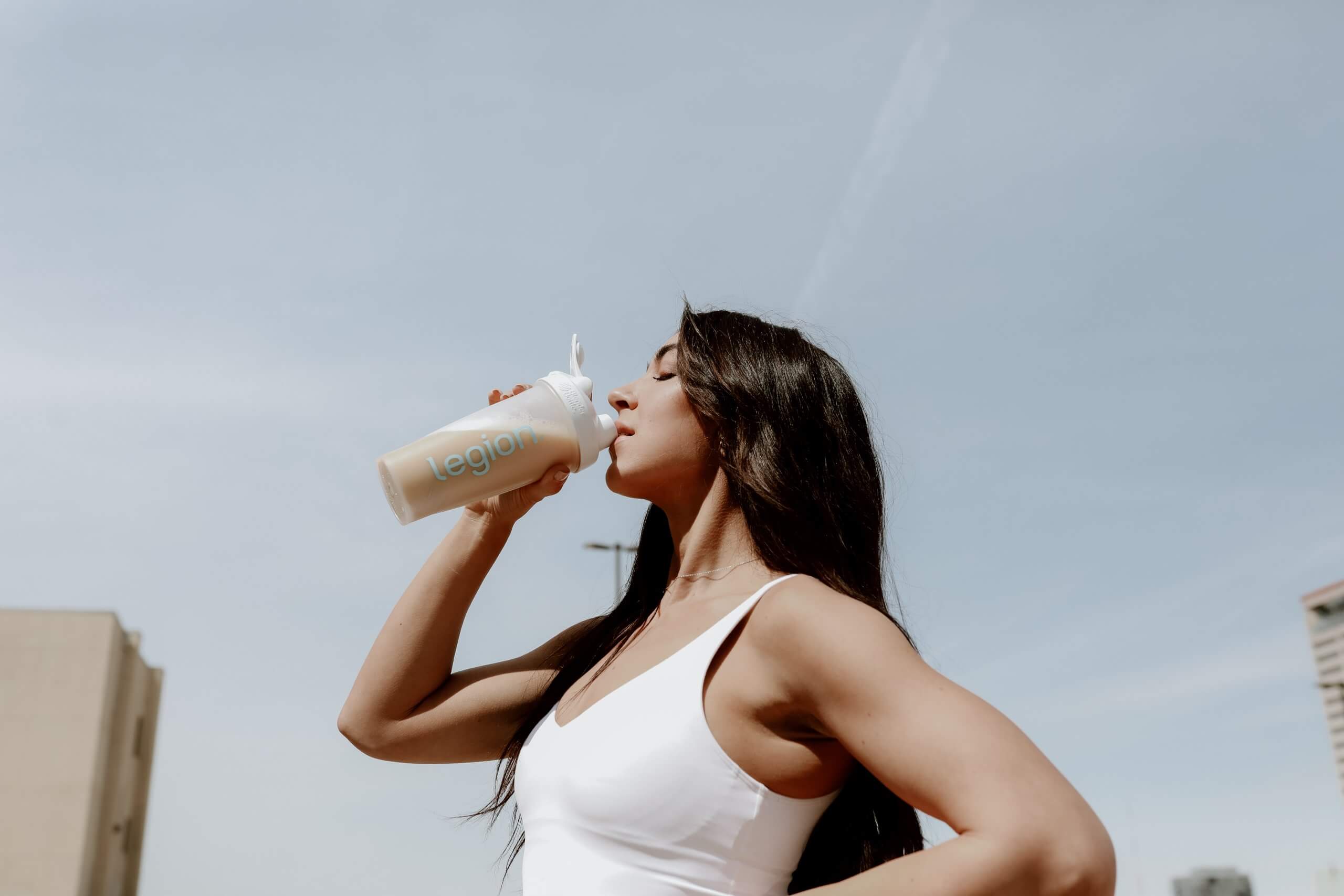
Here’s where things get murky:
Listing the %DV for protein is optional unless a company makes a “protein claim” on the label—phrases like “high in protein” or “good source of protein.”
If they skip those phrases, they can legally leave off the %DV entirely and just show the total grams of protein measured by the Kjeldahl method.
This creates a simple loophole.
Instead of saying “high protein,” a company can put a big, bold, eye-catching number on the front of the packaging (“20 grams of protein per serving”), and that entices prospective buyers.
Because they didn’t make a protein claim per the legal definition, they don’t have to show the %DV. And that matters, because only %DV will tell you how much of the protein your body can actually use.
Without it, companies can load up the formula with cheap, low-quality protein sources or even just nitrogenous amino acids, hit a high protein number, and still follow the rules.
That’s why this tactic works so well:
Most people have no idea that skipping a single phrase on the label lets companies hide their wrongdoing—or that the %DV is what reveals how much of that protein really counts.
When %DV Matters—and When It Doesn’t
Just because a product label doesn’t show the %DV doesn’t necessarily mean the company is being dishonest.
If a product uses a single, complete, high-quality protein source—like whey isolate, micellar casein, or egg white protein—the listed grams already reflect nearly 100% usable protein. In those cases, adding a %DV doesn’t add clarity because there’s nothing to correct for.
The distinction becomes less clear when various protein sources are mixed, or when protein is “enhanced” with extra amino acids.
If a product combines complete and high-quality and incomplete or low-quality proteins—say, whey (fantastic PDCAAS rating) and collagen (missing tryptophan and low in essential amino acids) or pea (strong PDCAAS profile) and rice (low in lysine but otherwise acceptable)—the total protein content no longer tells you everything you need to know.
Without the %DV, there’s no way to tell how much of that protein your body can actually use.
Even if the label tells you exactly how many grams of each type of protein are in the blend, you’d still need to understand protein quality to figure out how much of that total is truly usable—and most consumers don’t.
That said, not all blends are bad, even if they don’t list a %DV. When a product uses a blend of only high-quality, complete proteins, every ingredient contributes usable protein, so a %DV isn’t necessary.
Simply put:
If a product uses lower-quality (including incomplete) proteins, look for a %DV. If it uses only high-quality and complete proteins, you can trust the grams on the label.
How Common Is Protein Label Manipulation?
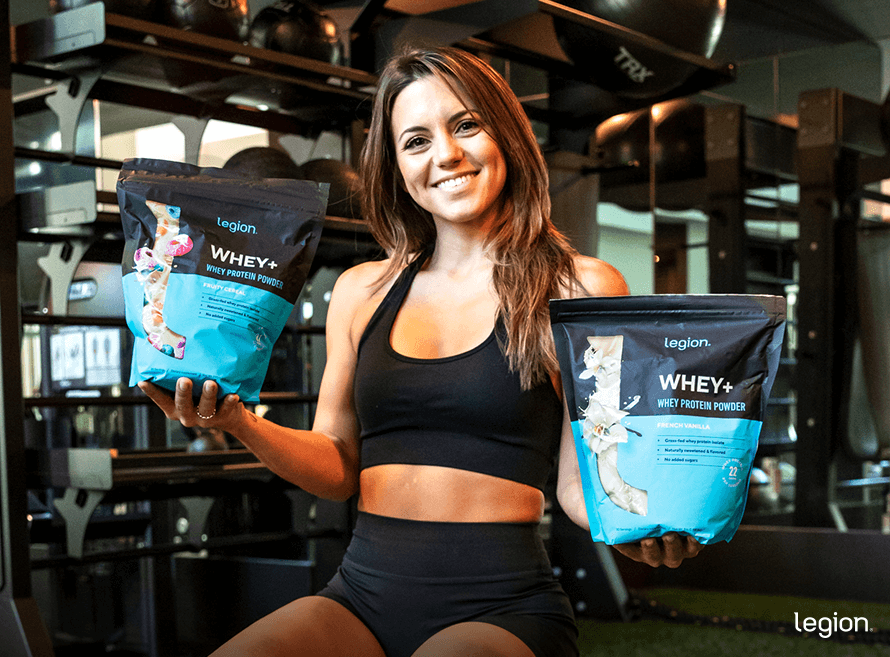
More common than most people realize.
Take Syntrax’s Matrix protein powder, for instance—a protein powder marked as “Amazon’s Choice” with over 1,200 reviews, a 4-star rating, and an “Overall Pick” badge—a sign it’s well-priced, purchased often, and rarely returned.
Its label claims 23 grams of protein per serving with no %DV listed in the Nutrition Facts panel, and the ingredients list includes glutamine peptides as part of its “non-dairy protein blend,” suspiciously listed before egg white protein (indicating the product contains more of the former than the latter).
That matters because glutamine peptides, which are significantly cheaper to include than any high-quality protein powder, can boost a product’s nitrogen content—raising the “grams of protein” figure without meaningfully improving its quality.
Vegan powders use the same playbook.
For example, Vivo Life is a company with nearly 8,000 Trustpilot reviews (4.5 stars) whose flagship protein powder has endorsements from over 1,500 health-care providers on FrontrowMD. The label claims 25 grams of protein per serving but, again, they don’t provide a %DV for protein.
It combines yellow pea protein with hemp protein, however, which complement each other to form a complete amino-acid profile. Green flag.
Unfortunately, though, the label doesn’t say how much of each form of protein is in the blend, and it also includes a “BCAA Blend,” which can inflate the total protein number without improving the product’s muscle-building value. Red flag.
Brands like Reebok and Gainful use a slightly different version of the same trick:
They print big protein numbers on the front, give no %DV on the Nutrition Facts panel, and use blends that include low-quality proteins like collagen.
Some do disclose the grams of each protein source in the fine print, but without the %DV, most consumers still can’t tell how much of that total is actually usable protein—and the big number on the front is still misleading.
And it’s not just protein powders—other protein products are offenders, too.
Genius Gourmet’s Sparkling Protein Drink boasts 30 grams of protein per can, which would be impressive if not for the missing %DV for protein and the inclusion of bovine collagen peptides among its top ingredients.
Or look at PRIMA Ancestral Protein Bars, which sold more than 1,000 units on Amazon in the month before publication. They claim 16 grams of “grass-fed, animal-based protein” per bar, but again there’s no %DV for protein and the first ingredient in their “PRIMA Protein Blend” is bovine collagen peptides.
How to Find a Protein Powder You Can Trust
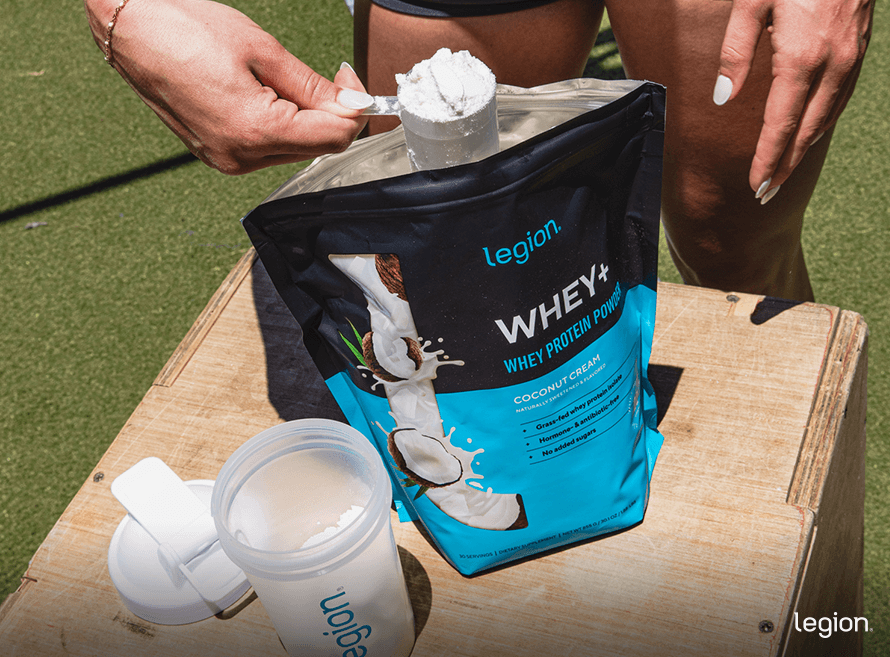
Now that you know how easy it is for companies to inflate their protein numbers, how do you find one that actually delivers what it claims?
The simplest way is to look past the number on the front of the package and focus on the source of the protein.
Choose products made from a single, complete protein—like whey, casein, milk, or egg—or from a blend of high-quality proteins known to support muscle growth effectively, like the same, as well as pea and rice, often called the “vegan’s whey” because of their complementary amino acid profiles.
Such sources perform well on the PDCAAS scale, meaning your body can actually use all the protein listed on the label, and you can be confident of that whether the label includes the %DV for protein or not.
If you want a powder made with these high-quality proteins, check out our Whey+, Casein+, Egg+, and Plant+ products.
For snacks made with complete protein blends, check out Legion protein bars, cookies, crispy treats, and cereal.
Be more skeptical of blends that include lower-quality sources like collagen, hemp, or added amino acids, however.
If a product contains any of these ingredients, it should also display a %DV for protein—and that %DV should be high. Otherwise, the grams on the front may not reflect how much protein your body can actually use.
That said, there’s nothing wrong with these ingredients when they’re included in supplements for other reasons—collagen for joint and skin health, or hemp for fiber and healthy fats—just don’t rely on them as one of your main sources of protein for muscle growth.
Finally, steer clear of vague protein “matrixes” or “complexes,” especially if there’s no %DV for protein. Without that context, those terms usually signal a company is using cheaper, less effective proteins to hit an impressive-looking number on the label.
FAQ #1: How can I check my protein powder’s quality?
To check your protein powder’s quality, start with the ingredients list. Ideally, it should contain:
- One complete protein (like whey, casein, milk, or egg),
- A blend of high-quality proteins (like the same or pea and rice), or
- A well-established plant-based blend (like rice and pea).
If the blend includes lower-quality proteins such as collagen, hemp, or added amino acids, look for a high %DV for protein—that’s what confirms how much of the protein is actually usable.
FAQ #2: What does the protein %DV on a label actually mean?
The %DV shows how much usable protein your body gets from one serving, based on a daily reference of 50 grams.
For example, if a product lists 40% DV, that means one serving provides about 20 grams of usable, high-quality protein.
FAQ #3: What %DV is considered high for protein?
Anything around 40% or higher per serving is considered excellent. That means the protein contains around 20 grams of complete, digestible protein, which is exactly what you want for building muscle.
Want More Content Like This?
Check out these articles:
- The Creatine Gummy Scandal: What You Need to Know
- Is Grass-Fed Whey Protein Powder a Scam?
- Should You Trust Your Supplement’s Label? What Science Says
- Is Grass-Fed Whey Protein Better than Regular Whey?
- Is Your Protein Powder Poisoning You?
Scientific References +
- Hayes, Maria. “Measuring Protein Content in Food: An Overview of Methods.” Foods, vol. 9, no. 10, 23 Sept. 2020, p. 1340, www.ncbi.nlm.nih.gov/pmc/articles/PMC7597951/, https://doi.org/10.3390/foods9101340.
- Wolfe, Robert R. “Branched-Chain Amino Acids and Muscle Protein Synthesis in Humans: Myth or Reality?” Journal of the International Society of Sports Nutrition, vol. 14, no. 1, 22 Aug. 2017, www.ncbi.nlm.nih.gov/pmc/articles/PMC5568273/, https://doi.org/10.1186/s12970-017-0184-9.
